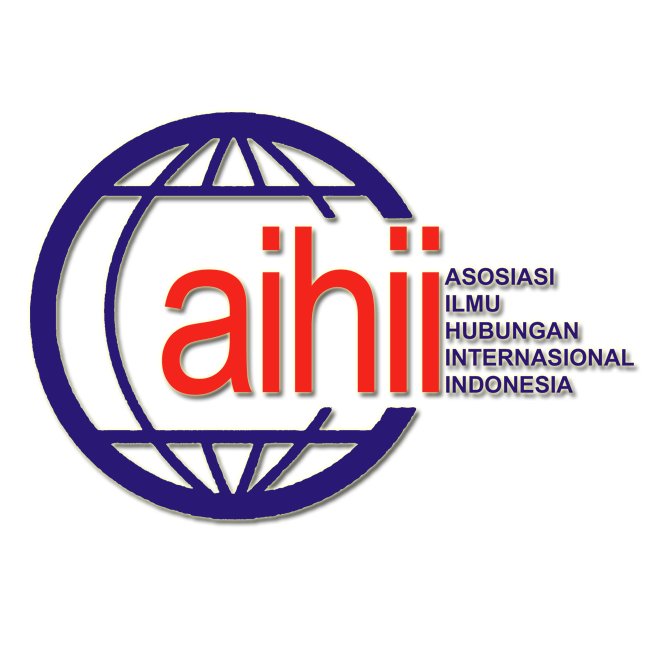STRATEGI STRING OF PEARLS MENINGKATKAN EKONOMI PAKISTAN MELALUI CHINA-PAKISTAN ECONOMIC CORRIDOR (CPEC) TAHUN 2013
DOI:
https://doi.org/10.31315/jpw.v2i2.7264Abstract
Artikel ini akan menyajikan strategi geopolitik China yaitu string of pearls dalam melihat kerjasama internasional China dan Pakistan. Kedua negara ini membentuk kerjasama untuk mewujudkan beberapa proyek di bawah kerangka kerjasama China-Pakistan Economic Corridor (CPEC). Tulisan ini menggunakan perspektif Liberalisme yaitu Teori Kerjasama Internasional, serta membedah strategi geopolitik China dengan konsep string of pearls sebagai latar belakang kerjasama internasional yang terjalin. CPEC sebagai alat mewujudkan dan menunjukkan pengaruh geopolitik China. Kerjasama China dan Pakistan ini mampu meningkatkan pertumbuhan ekonomi dan realisasi proyek infrastruktur dan sektor energi di Pakistan.
Kata kunci: China, Pakistan, CPEC, Kerjasama Internasional, String of Pearls
References
Anjaiah, Veeramalla. (2021). CPEC, Pengubah Permainan atau Cara China untuk Menjajah Pakistan? Retrieved from https://www.kompasiana.com/anjaiah/-6039bcddd541df2fa1282562/cpec-pengubah-permainan-atau-cara-china-untuk-menjajah-pakistan?page=all&page_images=1
Aryaguna, A. (2021). Memanfaatkan One Belt One Road: Kepentingan Ekonomi Pakistan dalam China-Pakistan Economic Corridor Tahun 2015-2020. Journal of International Relations. Volume 7, Nomor 2.
Asif, F. (2021). China’s International Development Cooperation and Pakistan. Retrieved from China Focus: http://www.cnfocus.com/china-s-international-development-cooperation-and-pakistan/
Creswell, John W. (2014). Research design: qualitative, quantitative, and mixed methods approach – 4th ed. United Kingdom: SAGE Publications Ltd.
Dai, Xinyuan. (2017). International Cooperation Theory and International Institutions. Retrieved from Oxford Research Encyclopaedias.
Dugin, Alexander. (1999). Foundations of Geopolitics: The Geopolitical Future of Rusia: English Translation. Russia: Arktogeja.
Farooq, Abbad. (2020). Revisiting CPEC: A Corridor of Opportunities. Journal of Social and Political Sciences. Vol.3, No.1, 235-242.
Haque, N. (2017). Krisis Energi Berkepanjangan Pakistan. Retrieved from https://www.project-syndicate.org/commentary/pakistan-energy-crisis-reform-by-nadeem-ul-haque-2017-06/indonesian
International Monetary Institute of the RUC. (2019). International of the RMB Currency Strategy in the “Belt and Road” Construction. New York: Taylor & Francis.
Khan, Navid. (2018). China Pakistan Economic Corridor (CPEC): Regional Development, Employment Opportunities and Policy Challenges. Global Political Review. Volume 3 Number 1.
Manhas, Neeraj S. (2020). China’s Policy of ‘String of Pearls’. International Journal of Social Impact. Volume 5, Issue 3, DIP: 18.02.003/20200503.
Milner, Helen. (1992). International Theories of Cooperation Among Nations: Strengths and Weakness. World Politics Journal.
O’Neill, K. (2004). Actors, Norms, and Impact: Recent International Cooperation Theory and the Influence of the Agent-Structure Debate. Annual Review of Political Science. Vol. 7:149-175.
Rifaat, H. (2016). The China-Pakistan Economic Corridor: Strategic Rationales, External Perspectives and Challenges to Effective Implementation. The Stimson Center.
Scholvin. (2016). Geopolitics: an overview of concepts and empirical examples from international relations. FIIA Working Paper. The Finnish Institute of International Affairs.
Siitonen, L. (1990). Political Theories of Development Cooperation – A Study of Theories of International Cooperation. United Nations University: World Institute for Development Economic Research.
Tehsin, M. (2017). CPEC and Sustainable Economic Growth for Pakistan. Retrieved from University of the Punjab: http://pu.edu.pk/images/journal/studies/PDF-FILES/Article-6_v18_2_Dec17.pdf
Wasim, S. (2018). Analysis of CPEC Projects and Effect on Construction Sector of Pakistan. International Journal of Social Sciences, Humanities and Education. Volume 2, Number 3.
Zia, M. (2020). China-Pakistan Economic Corridor: A Flagship and Exemplary Project of the “Belt and Road Initiative”. International Journal of Management Sciences and Business Research. Volume 9, Issue 12.
Downloads
Published
Issue
Section
License
1. Copyright of this journal is possession of Pena Wimaya Journal, article is by the knowledge of the author, whilst the moral right of the publication and the copyright of article belongs to the author.
2. The legal formal aspect of journal publication accessibility refers to Creative Commons Attribution-Non Commercial-No Derivative (CC BY-NC-SA), implies that publication can be used for non-commercial purposes in its original form.
3. Pena Wimaya Journal has the right to change the format, republish with the author's name and archive articles.
4. Every publication (printed/electronic) are open access for educational purposes, research, and library. Pena Wimaya Journal is not responsible for copyright violation other than the three aims mentioned above.






